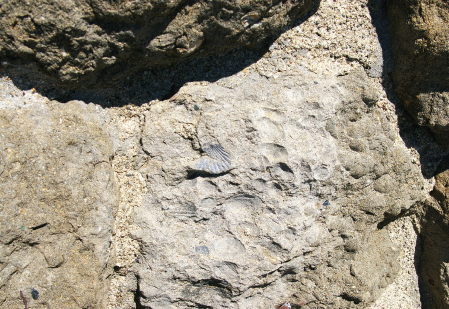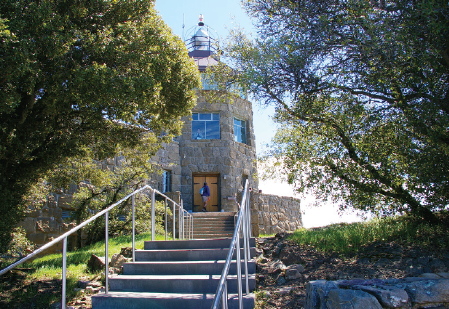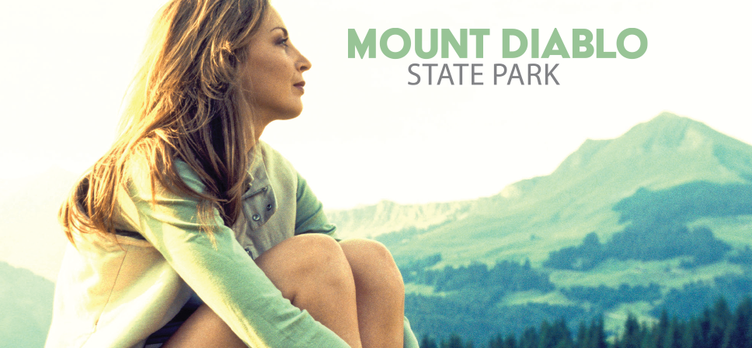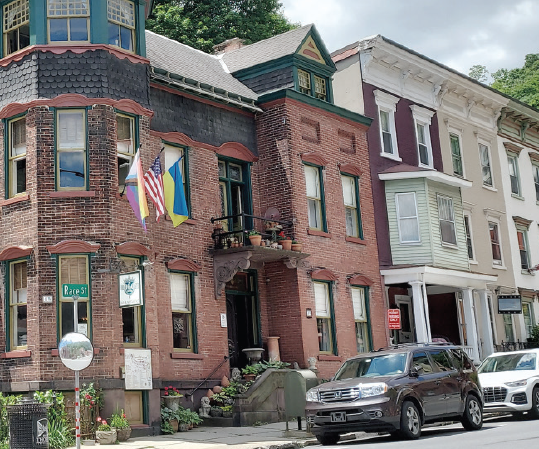These days, we’re all being encouraged to get outdoors for our mental and physical health. One of the prettiest places to visit at this time of year is Mount Diablo State Park – a hidden gem in plain sight.
I confess that Mount Diablo has faked me out for decades. Based on its conical shape, and what locals had told me, I always thought it was an extinct volcano. It’s actually a fascinating mountain formation that offers fabulous views, intriguing geology, and insights on the region’s native peoples.
Bulging Up & Out
Mount Diablo State Park sits right in our own back yard, and makes the perfect day trip. There are two access routes: North Gate and South Gate – South Gate is closer to us. The drive to the mountain’s base is around an hour – but the steep twisty drive to the summit can take another hour – not including stops to enjoy the variety of activities along the way. The park features numerous history areas, hiking trails, picnic places, and campsites, and is also popular with cyclists.

Mount Diablo was and remains a sacred place for many Native California tribes. Annual ceremonies were held on its slopes, and different tribes lived on and around the mountain. At places like Rock City, you can see ancient acorn grinding rocks.

At 3,849 feet tall, Mount Diablo’s location in the Diablo Range between the Coastal Range and the Central Valley offers unparalleled 360-degree views from the peak’s Summit Visitor Center, extending over 100+ miles in every direction from beyond San Francisco to the snowy Sierra.
I began by going to the Center, open daily 10 a.m. to 4 p.m., which gets busy (it has overflow parking). Built in the 1930s as part of the Civilian Conservation Corps project, this historic observation building features stone quarried from within the park. Look for the ancient fossil seashells embedded in the building’s stone as you climb the stairs to the Observation Deck. Inside you can learn about the area’s cultural history and geology.
The tower was originally built as a beacon for aviators but went dark during WW2 after the invasion of Pearl Harbor for fear of attracting enemy planes. It is now lighted only on December 7th in memory of those who lost their lives at Pearl Harbor.
It’s also home to a historic landmark. In 1851, Colonel Ransom established Mount Diablo as the initial reference point for land surveys used to begin dividing up public lands. From here, lines extending north, south, east, and west formed the survey grid that covers all of Nevada and most of Northern California, becoming the basis of today’s land survey system.
Weather atop Mount Diablo is unpredictable. On my visit, I spent much of the time surrounded by fog and gusty winds, a common occurrence in spring and winter. But when the clouds parted, the views were extraordinary, distant landmarks seeming so close you could reach out and touch them. Spring and Fall are considered prime viewing times when the air is clearest.

The source of the mountain’s name is unknown. The most “accepted” version is that in 1806, Spanish troops were pursuing a band of Native Americans. At nightfall, confident that they had them trapped in a thicket, the troops decided to wait until morning to capture them. The Native Americans slipped away in the night, and the troops insisted it could only have been with the help of El Diablo.
Mount Diablo State Park remains open with certain restrictions due to the pandemic. To check for updates and current policies, visit their website before you go bit.ly/mountdiablostatepark.





